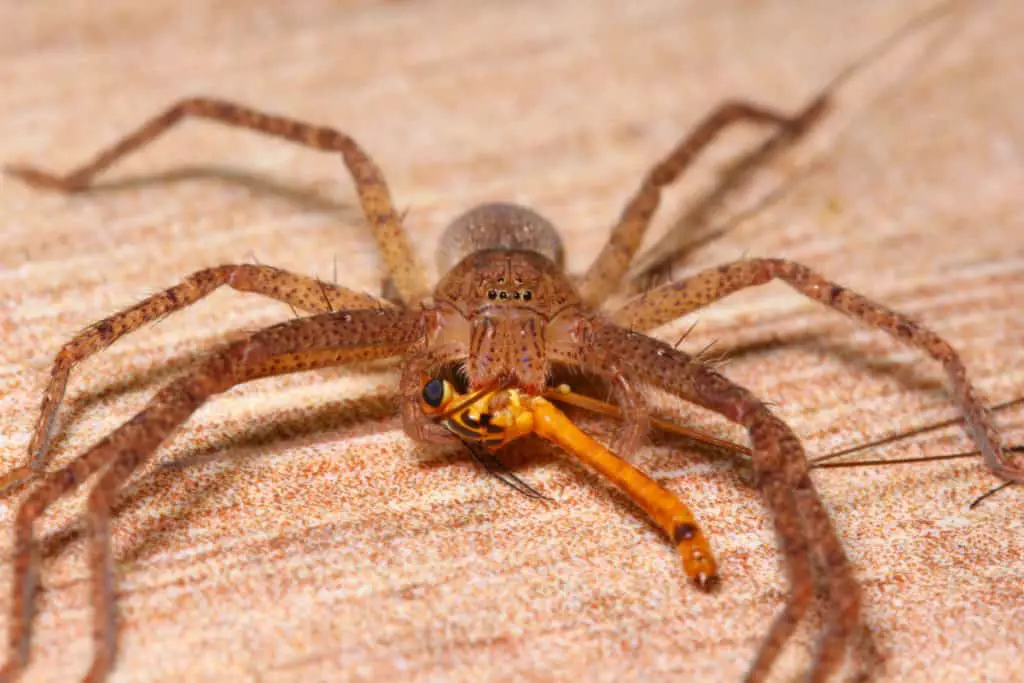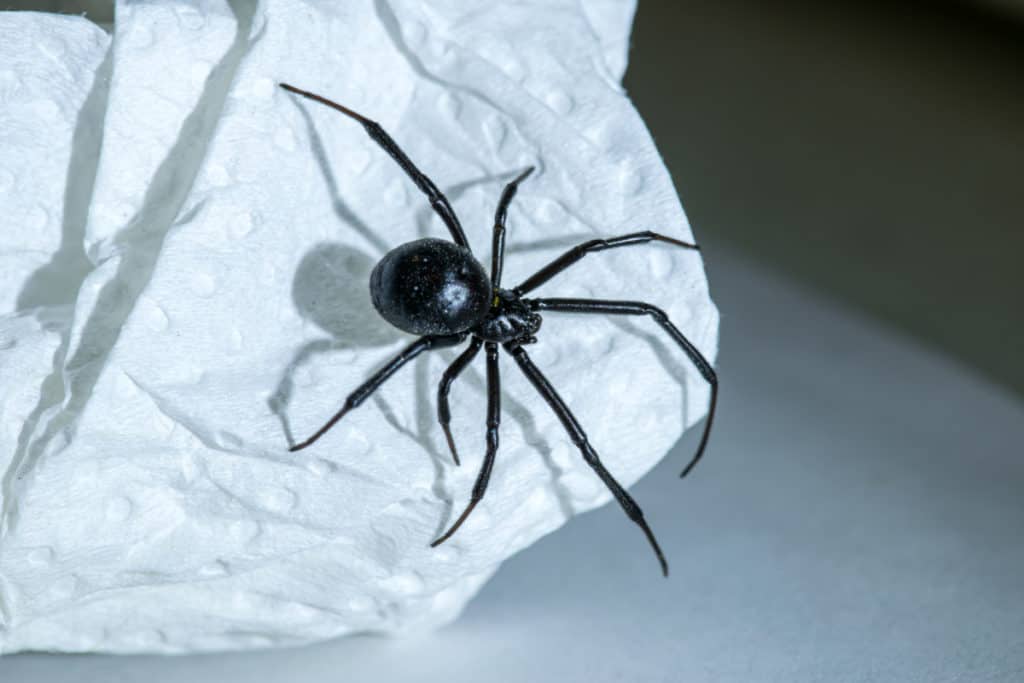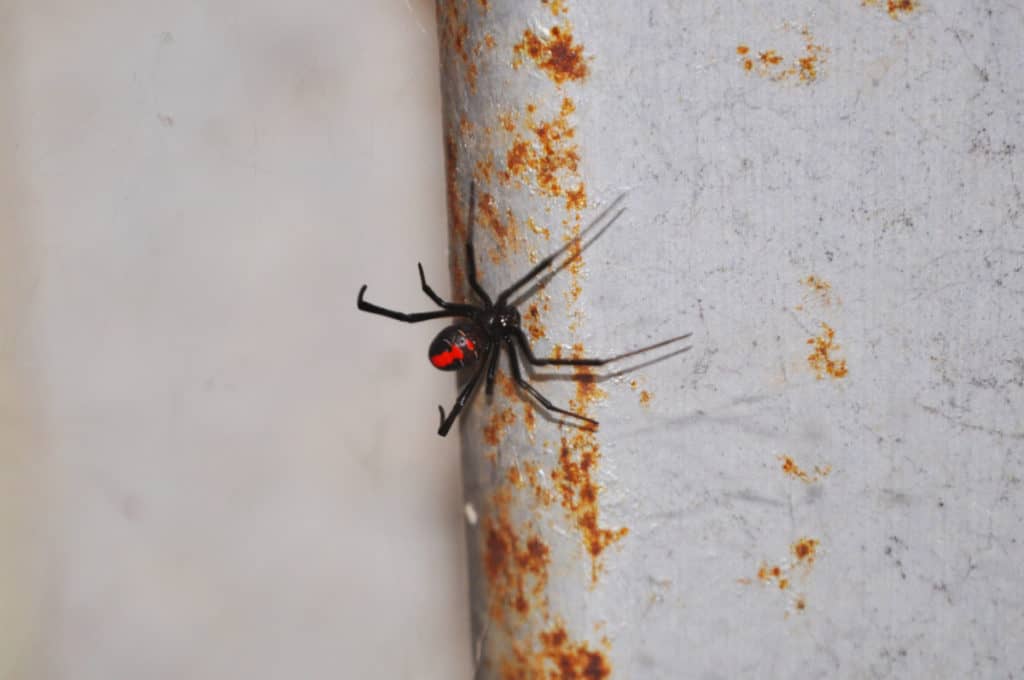Spiders tend to be extremely varied in terms of their appearance and lifestyle choices — one of the most important of which is their diet. Since that happens to be one of the key distinguishing features of any living being, we found ourselves rather intrigued about just what spiders usually feast on, leading us to the inevitable question: Do spiders eat ants?
Yes, they do. Certain species have a preference for insects, and as ants belong to this category and are especially numerous, spiders that are insectivorous often opt to feed on them as well.
What kind of spiders eat ants and how do they capture and kill their prey? How likely are you to encounter these insectivores, could there be a few of them lurking in your home?
Keep on reading to find out the answers to these questions and many more you’re likely to have on the topic.
Spiders And Their Diet
Most spiders belong to a select group of creatures that love to sneak up on unsuspecting prey, immobilize them, then dine on them. That said, a number of them are partial to plant products as well.
They also have quite an appetite and are capable of putting away astronomical amounts of food. The eight-legged collective is known to consume anywhere between 400 to 800 million tonnes of food annually, beating both humans and whales and proving that numbers will triumph oversize every time.
What Do Spiders Like To Eat?
Quite a variety of foods actually, as shown below:
Insects
Spiders that enjoy feeding on their fellow arthropods have a versatile buffet to choose from. Especially since their victims belong to the largest family in the animal kingdom and tend to be particularly prolific in terms of reproduction.
Examples of insects that are likely to feature on a spider’s menu include ants, bees, butterflies, houseflies, mosquitoes, and moths.

Larger Animals
There are species of spiders that require considerable sustenance and for whom the odd fly or springtail simply won’t do.
Examples of these spiders include huntsman spiders which are known to eat lizards, as well as the regal jumping spider which is rather fond of having an entire frog as a snack. There is also the Goliath birdeater which is partial to rodents, snakes, and even birds.

Other Spiders
Certain species of spiders are not averse to tucking away their kind. These include those of the spindly-legged variety known as cellar spiders.
Commonly found in homes and harmless to humans, this species will help itself to any other spiders in the vicinity when feeling particularly peckish.
These house-dwelling spiders are also known to be rather fond of redback spiders (which incidentally also enjoy snacking on each other during mating).
Portia spiders are also another example and will frantically struggle like a trapped insect to tempt another spider to get close enough believing it’s in for a tasty treat.
Spitting spiders have absolutely no compunction about attacking and gobbling their siblings under their mother’s watchful gaze and are also fond of hunting down jumping spiders as well.
If you would like to know more about the diets of different spiders check out this article we have written that covers this broader topic in much more detail, What Do Spiders Eat?
Other Food Sources
In addition to insects, reptiles, and their fellow arachnids, certain spiders even chew on their webs to recoup some of that protein and energy expended in spinning them in the first place.
Others display omnivorous leanings and enjoy a syrupy helping of nectar or plant sap, as well.
We understand that the diet of spiders can be very broad. This raises another thought, do spiders need to drink water? We looked into this and have written an article about it, it’s called, Do Spiders Drink Water?
What Species Of Spiders Eat Ants?
Several species of spiders rely on ants as a source of nourishment. A few examples of ant-eating spiders include:
Black Widows
Renowned for their venom which is fifteen times more lethal than rattlesnakes’, these spiders have a preference for dark, shady areas where they can lie in wait for their favorite prey.

Twin Flagged Jumping Spiders
Sharp-eyed and athletic, these arachnids which are easily recognizable by vivid markings on a glossy exterior, are extremely skilled at pinning ants down while nimbly remaining out of reach of their mandibles and stingers.

Jumping spiders are one of the most interesting members of the arachnid family. If you are interested in what jumping spiders eat and how they capture their prey then we have an article for you on that. It’s called, What Do Jumping Spiders Eat?
Zodariidae Spiders
Popularly referred to as ant spiders, these arachnids tend to hang around their victims and are even capable of imitating the behavior of ants as well. Some of them may attack an ant’s legs or even its petiole, to immobilize it completely.

How Do Spiders Catch Ants?
In nature, every species has its peculiar traits that enable its members to navigate their environment with ease and obtain nourishment as well. It’s no different for spiders which, being a varied bunch, have an extensive range of traits they can rely on to catch their prey. Examples of such features include:
Athleticism
Spiders aren’t often associated with impressive feats of physical prowess, and yet, some of them are capable of performing them to ensure they remain well-fed.
Jumping spiders belong to this category and can leap onto their prey by ensuring impressive degrees of precision and using a force that is five times their weight to launch themselves into the air.
Wolf spiders are also another family of spiders that rely on their awesome physical abilities to keep hunger at bay. They are also capable of outrunning their foes before immobilizing them.
Disguise
According to researchers, about 300 species of spiders are masters of disguise and are capable of mimicking ants as well. Doing so has numerous benefits such as enabling a spider to obtain a tasty snack without being turned into lunch itself by other ants in the vicinity.
One such species of arachnid that takes full advantage of this practice is the crab spider which is pretty adept at snatching an ant and making off with its meal before it can be detected and attacked by its kin.
Webs
Several spiders rely on their webs to trap unsuspecting ants going about their daily business. They may simply wait for one to fall into their lair, or even take a more proactive role by chasing their fleeing prey right into the sticky strands that make up their webs.

Cellar spiders are some of the best-known web spinners and rely on the glue they produce with their pedipalps to hold their prey in place while they spin a cocoon around it to immobilize it.
Certain spiders may also rely on several webs to ensure their chances of having a steady source of sustenance remain rather high.
How Do Spiders Kill Ants?
Spiders are nothing if not innovative, and various species rely on different means of dispatching their prey.
Black widows make use of one of the most efficient weapons in their arsenal-their venom which is so powerful that it can easily take down significantly larger animals.
They love to hang out close to burrows, dug by small creatures in dimly lit areas. Once a potential victim gets snagged in their web, they will pounce on it immobilizing it with their toxins before proceeding to cocoon it on a web. They will then douse it with their digestive juices to ensure they can consume it with ease.
The wolf spider is another predator that relies on its venom to kill its prey. The tarantula look-alike which has a habit of sprinting after its victims will bite into them, injecting them with venom before starting the feast.

However, not every webspinner can rely on venom, and species such as the Philoponella Vicina rely on the use of their webs to crush their prey.
Scientists estimate that these insectivores can use as much as 140 meters of silk to suffocate their victims before consuming them.
Are There Spiders That Live In Your House That Feed On Ants?
Yes, there are.
Several spiders are fond of living alongside humans and feasting on the abundance of ants and other insects which also have a preference for living in our homes. Examples include:
Cellar Spiders
One of the most common species which can be found in households, also known as Daddy Long Legs spiders.
These spiders enjoy feeding on a wide variety of household insects. Known for their fondness of damp spots, they also have a habit of layering new webs over the old rather than relocating to newer quarters.

Redback Spiders
Native to Australia and considered to be cousins to black widows, redback spiders also have a preference for dwelling near humans. Hence they tend to live in and around homes which can be rather bad news for their inhabitants, both arthropod and human since their venom is especially potent.

However, only females are considered more dangerous as they have fangs that are sufficiently developed to transmit the toxins. That said, they never attack humans unless disturbed.
We know that spiders are good hunters and enjoy a feed. One thing we have often been asked is, what happens to the food? Do spiders poop as we do? Surely they do, but not like us. We have put together an article on this topic if you are interested it’s called, Do Spiders Poop?
Brown Recluse Spiders
Known as fiddle backs due to the violin-shaped pattern on their backs, members of these species are pretty common in the Midwest.

They have a reputation for having a robust constitution that enables them to withstand frigid winter temperatures and the blazing heat of summer. This handy feature also ensures they can survive for months without any food.
Brown recluse spiders don’t attack humans. However, should they feel threatened they will bite. The injury will be initially painless despite their venom being extremely powerful, but the agony comes within a few hours. The wound will swell and may cause necrosis, and take months to heal, leaving prominent scarring.
Do you live in Michigan or Utah? If you do you are in luck. We have written guides to the spider that are found in those states. Check them out if you are interested, Spiders You Might Find in Michigan. A Complete Guide and What Spiders Can Be Found in Utah and How Many Are Poisonous?
Do Ants Attack Spiders?
Yes, they do. Several species of ants share common traits with carnivorous arachnids including an extensive and varied diet, voracious feeding habits, and a tendency to snack on their own kind.
The following ants are known to find spiders rather delectable:
Bulldog Ants (Myrmecia)
Sharp-eyed and extremely aggressive, with potent venom to match, Myrmecia ants are considered the most dangerous of their kind on the globe. Bulldog ants are omnivores and live off fungi, seeds, nectar, honeydew, and fellow arthropods including spiders.

Recognizable by their immense size and red color, they tend to grasp their foes with their powerful jaws before stinging them several times.
Carpenter Ants (Camponotus)
Large and often black, members of this species seek out damp wood to create their nests where they live in large colonies. They typically have a ‘sweet tooth’ and are known to farm aphids from which they obtain honeydew. They get their protein by feeding on other insects and arachnids, including spiders, and will eat them either dead or alive.

Fire Ants (Solenopsis)
Fire ants are omnivorous and will help themselves to both plants, and living creatures to remain well fed. Like carpenter ants, they also obtain honeydew from aphids.

Fire ants are capable of both biting and stinging. Their stings are particularly painful to humans. Fire ants have a habit of overwhelming their prey before dissecting it into minute bits which are then taken back to their colony.
What Other Bugs Eat Ants?
Ants
As noted above, some ant species don’t have any problems feasting on other ants. Fire ants are one such example and have a preference for Pheidole ants. However, their preference does come with risk since their victims have worked out a means of dispatching their foes. That said, the defenders are not always successful in repelling an attack, and occasionally have to flee before the invaders arrive.
Doodlebugs
Named for the patterns they leave in their wake, these antlion larvae exist on a diet that consists of ants for the most part. They catch their prey using traps that they create in the sand and thwart ants’ attempts at escape by tossing sand at them. Like spiders, they also inject their prey with enzymes before sucking out the resulting nourishing goo.
Here is a strange one we have been asked about before, so we researched and wrote an article covering it, Do Grasshoppers Eat Ants? Or Is It The Other Way Around?
Wasps
The larvae of the Orasema wasp, survive to adulthood by hitching a ride on foraging fire ants and burrowing into one of their larvae on arrival. They manage to do so while being undetected and will grow to mature adults, following which they will take off to continue the cycle.
If this has sparked your interest in wasp other things was might eat, then it would be worth checking out this article we have written, What Do Wasps Eat?
The Wrap Up
One word can be used to describe the arachnid diet: variety. However, as a whole they are very different and hunt various kinds of prey such as bees, butterflies, birds, frogs, lizards, and even other spiders; some even enjoy plant matter as well. Several of them love ants too.
Their methods of hunting their prey also vary with certain species relying on their silk, others on their venom, and others on sheer speed or feats of athleticism.
Spiders are far from the only group of arthropods that rely on ants as a source of food.
Equally interesting is the fact that certain species of ants also enjoy the occasional arachnid as part of their diet, showing that predators are by no means exempt from becoming prey themselves.
Sources
https://www.earthkind.com/blog/what-do-spiders-eat-the-diet-of-a-common-house-spider/
https://phys.org/news/2017-08-tiny-spiders-preying-frogs-lizards.html
https://reptilepark.com.au/animals/spiders/australian-spiders/red-back-spider/
https://www.sciencedaily.com/releases/2014/06/140612095035.htm
